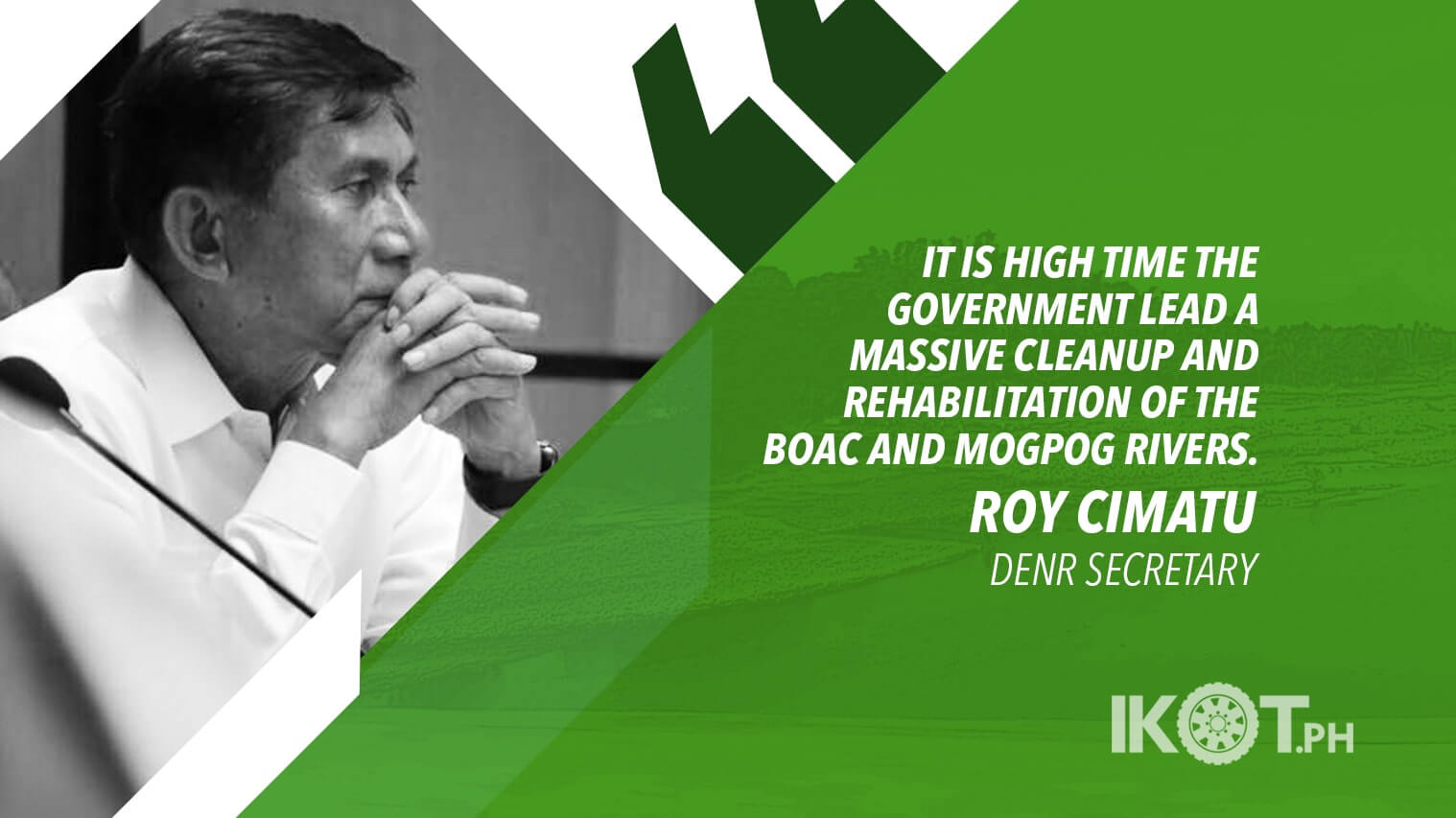Environment Secretary Roy Cimatu has vowed to restore two rivers in Marinduque province that were damaged in what has been dubbed as one of the worst mining disasters in Philippine history.
“We made a plan to restore all the rivers in the Philippines, including the Boac and Mogpog rivers. Lilinisin natin ‘yan and we have a way of doing that using non-government resources,” Cimatu told a cheering crowd during Marinduque’s centennial celebration recently.
The environment chief was the guest of honor at the celebration of the 100th anniversary of Marinduque as a province on the invitation of provincial officials led by Governor Presbitero Velasco Jr. and his son, Congressman Lord Allan Velasco.
The environment head said it is high time the government lead a massive cleanup and rehabilitation of the Boac and Mogpog rivers for the benefit of the people of Marinduque who continue to suffer from the effects of the catastrophic tailings spills from the site of Marcopper Mining Corp. in 1993 and 1996.
“The environmental damages and unresolved issues brought about by the Marcopper mining operation in Marinduque must be put to an end.”
“The environmental damages and unresolved issues brought about by the Marcopper mining operation in Marinduque for several decades now, must be put to an end,” he said.
In March 1996, a fracture in the drainage tunnel of Marcopper’s Taipan pit spilled more than 1.6 million cubic meters of toxic mine tailings, flooding villages and poisoning the Boac River.
Three years before that, the firm’s Maguila-guila siltation dam also burst, flooding the town of Mogpog, where two children drowned in the mine waste. It practically killed the Mogpog River with its toxic mine tailings.
Marcopper, which started its copper mining operations in the province in 1969, had been dumping millions of tons of mine waste or tailings directly into Calancan Bay, destroying corals and seagrass.
Cimatu said he would immediately issue a department administrative order (DAO) once the Marinduque provincial government submits a formal request to place the Boac and Mogpog rivers under rehabilitation.
“The planned river rehabilitation includes the dredging of the two rivers by a private contractor at no cost to the government.”
The planned river rehabilitation, he said, would include the dredging of the two rivers by a private contractor at no cost to the government.
Cimatu said the private contractor will have to shoulder all the expenses of the dredging operation in exchange for whatever minerals that he may recover, provided he pay the corresponding four percent excise tax.
So far, he has already issued four DAOs in relation to the restoration of silted rivers through dredging, based on the separate requests of the provincial governments of Zambales, Oriental Mindoro and Negros Occidental.
The DAOs were pursuant to Joint Memorandum Circular No. 1, Series of 2019, issued by the Department of Environment and Natural Resources, Department of Public Works and Highways, Department of the Interior and Local Government, and Department of Transportation.
The joint circular seeks to protect and restore to their natural state and water flow the heavily silted river channels in the country.
Meanwhile, Cimatu revealed that he already approved an initial P5 million funding for the construction of a 90-meter-wide gabion dam across the Mogpog River, particularly the downstream portion of Maguila-guila Creek, to prevent further siltation in its basin.
Regional Director Roland De Jesus of the Mines and Geosciences Bureau in MIMAROPA, (Mindoro, Marinduque, Romblon, and Palawan) said the amount will cover the first phase of the project, which include the conduct of feasibility study, technical data gathering, design and planning for the construction of the gabion dam.
“The result of the first phase will yield crucial information on geological, geotechnical and hydraulic analysis of the Maguila-guila Creek, which will determine the design of the structure,” De Jesus said.
“The second phase or the implementation of construction stage may vary depending on the result of the first phase of the project,” he added.

